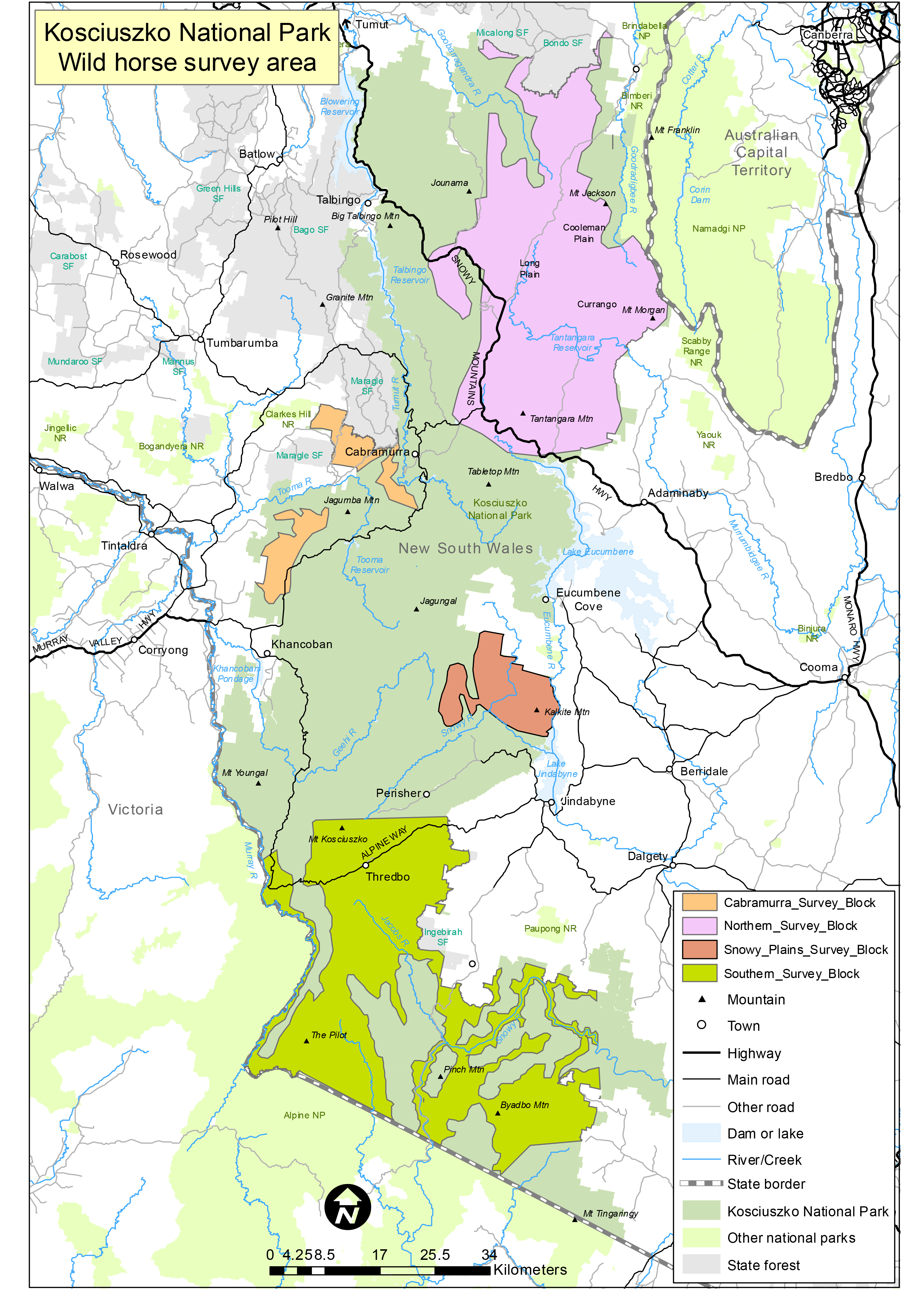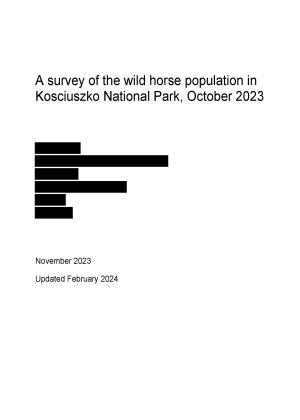Additional 2023 horse population survey data released
The National Parks and Wildlife Service has released supplementary explanatory information and raw data collected as part of the 2023 wild horse population survey in Kosciuszko National Park.
More information
Kosciuszko National Park is 3 times larger than the Australian Capital Territory and the same size as the island of Bali. Determining the wild horse population by counting every animal is impossible in such large, rugged and remote terrain.
Regular scientific surveys are conducted in accordance with international best practices to estimate the population of wild horses in the park.
Surveys are designed and analysed by an expert from the University of New England. The results are peer-reviewed by independent experts from the CSIRO (Commonwealth Scientific and Industrial Research Organisation) and Queensland Department of Agriculture and Fisheries.
Wild horses are estimated to occur across more than 50% of the park, with most of the wild horse population occurring in the park's northern block.
National Parks and Wildlife Service is legally required to reduce the population of wild horses to 3,000 and limit their range to 32% of the park by June 2027.
The next population survey will occur before the end of 2024.



